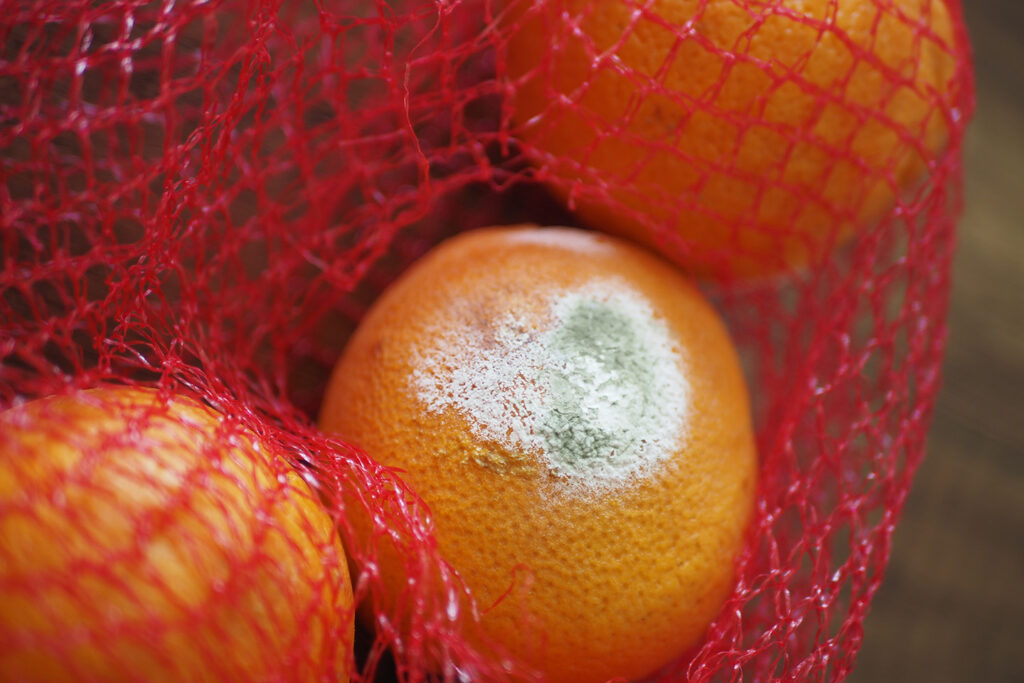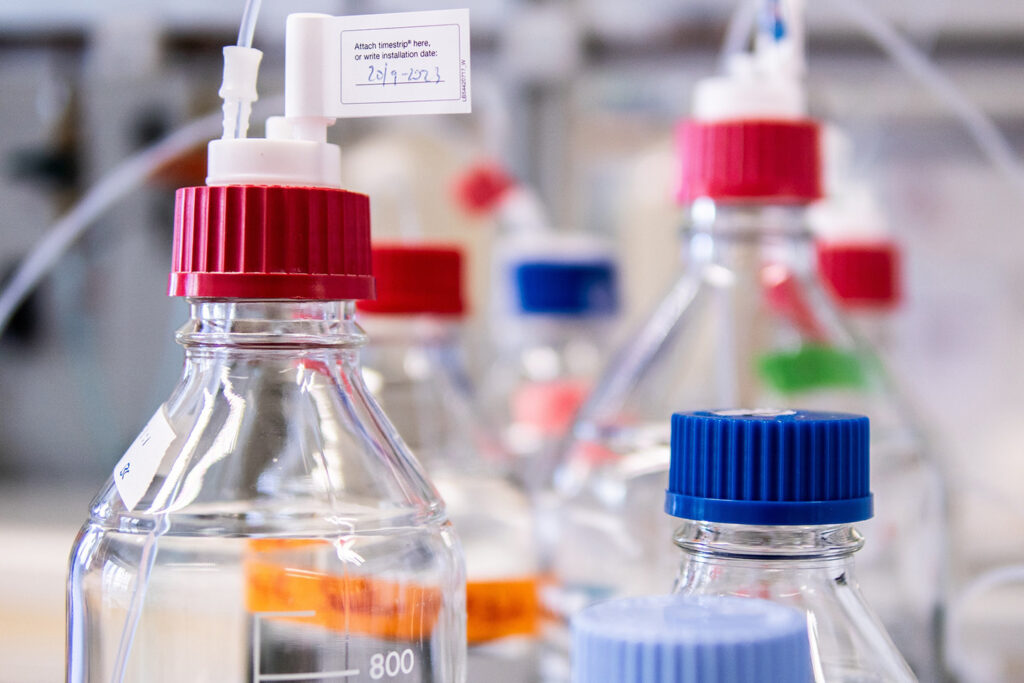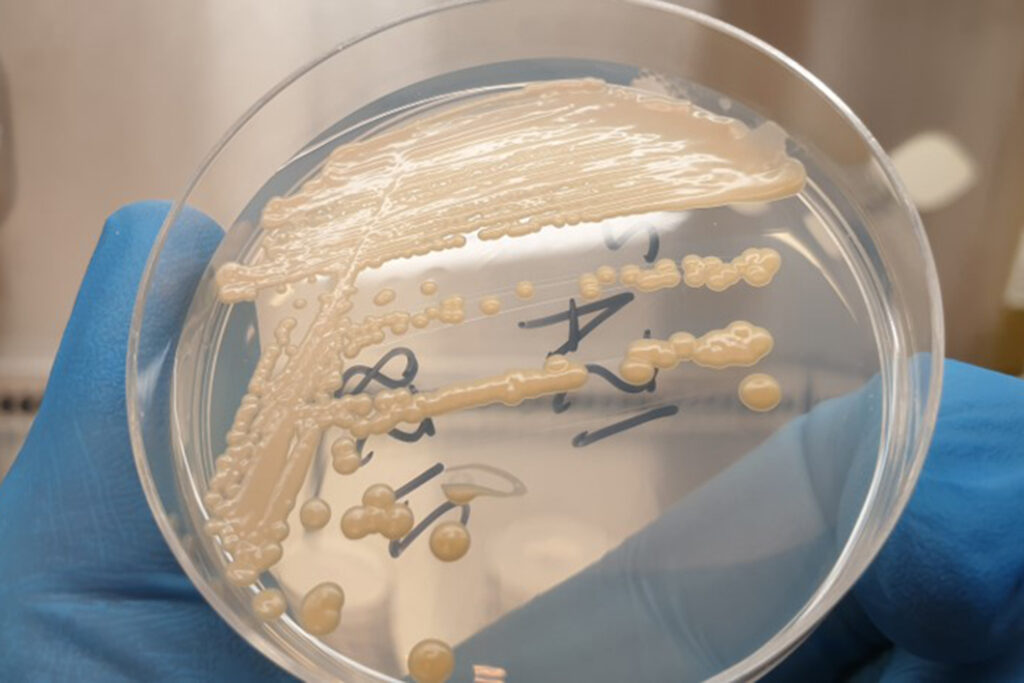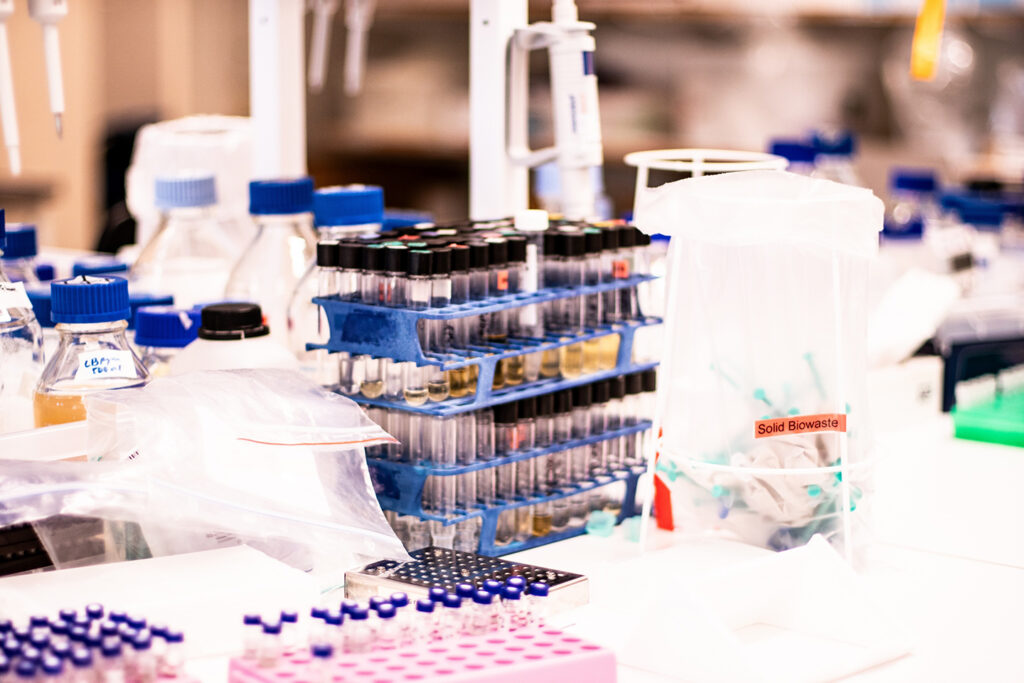YeastGuard – Can a Living Material Protect Produce and Reduce Food Waste?
Nearly 60% of harvested fruits and vegetables go to waste, driving an urgent need for innovative solutions to tackle one of the main culprits: mold growth. To pioneer a new nature-based solution, researchers and experts from Chalmers University of Technology, Aalto University, Axfoundation, and RISE are uniting in the cross-disciplinary project YeastGuard. The goal? Develop an innovative living material using yeast to prevent mold, cut food waste and bolster food system resilience.

The Issue
Today, mold poses a significant threat to fresh fruit and vegetables, resulting in massive global food waste. Efficient, sustainable, and safe methods to combat molds are largely lacking. Conventional methods, such as washing and chemical pesticides, fall short. Not only are they ineffective, but they also raise concerns about food safety and environmental impact. Using living materials containing yeast is a highly attractive alternative to these current methods, and earlier research shows that several yeast species are highly effective in inhibiting the growth of molds. However, the current understanding of this phenomenon is limited, and the different applications are still largely unexplored.
5 Food Waste Fact
- Globally, nearly 60 percent of all fruits and vegetables produced are discarded, the highest percentage among all types of foods (FAO).
- A major cause of fruit and vegetable waste is postharvest diseases caused by molds.
- Discarded food and beverages account for 8 to 10 percent of total greenhouse gas emissions, but they also represent a substantial waste of nutritional and economic value and the inefficient use of critical resources such as water, land, energy, fertilizers, and labor.
- According to the UN’s goals in Agenda 2030, global food waste needs to be halved by 2030.
- Food loss and waste occurs throughout the food supply chain globally, including at household level, at a large economic cost for consumers.
Our Solution
The project YeastGuard: Yeast-Powered Solutions to Combat Food Waste aims to develop a new living material where yeasts produce natural substances, called biogenic volatiles, preventing mold from spoiling harvested fruits and vegetables. While previous research showed live yeast sprayed on strawberries can mitigate the production of mycotoxins, this project aims to pilot an innovative method and instead encapsulate yeast within a material. The material shall provide nutrients, and moisture, promoting the production of volatile substances that inhibit mold growth. These living materials can be placed in packaging with fruits and vegetables, curbing the substantial amount of wasted produce annually. To succeed, researchers must first better understand how yeast functions and interacts with the material and molds.
Living materials is a relatively new field of research with sky-high potential. If we succeed, it could mean a paradigm shift in food preservation, offering a sustainable and effective solution to reduce food waste and promote a more resilient food system.
– Cecilia Geijer, Associate Professor, Industrial Biotechnology, Life Sciences at Chalmers University of Technology

The YeastGuard project will explore how the BioVocs produced can inhibit the growth of molds. Photo: Robin Rydbergh.

Chalmers University of Technology has gathered a unique collection of yeast strains from honey. Photo: Karl Persson.

Project partners are Chalmers University of Technology, Aalto University, Axfoundation and RISE. Photo: Robin Rydbergh.
Project Goals:
The project aims to develop a new living material in which yeast can produce biogenic volatiles, which prevents molds from spoiling harvested fruits and vegetables. The three main deliverables in the project are:
- Understanding Yeast-Mold Interactions: Test different yeast species´’ effects on molds.
- Developing Sustainable Living Materials: Establish sustainable, biobased, and safe materials in which yeast can thrive and produce Biogenic Volatile Organic Compounds.
- Testing Efficacy: 3D print prototypes of living materials and evaluate the effect of these yeast-containing materials on mold growth in packaged produce in a real environment.
Our Work
The cross-disciplinary project brings together researchers and experts in microbiology and biotechnology at Chalmers University of Technology, material science at Aalto University, 3D food printing and food safety at RISE, and experts on sustainability in future food and materials at Axfoundation.
Through this project, researchers will characterize in detail how efficiently different yeasts inhibit molds, identify which biogenic volatiles they produce, and how a sustainable and safe material can be created that promotes the yeast’s production of these volatiles. Together with industry partners, the project will incorporate the best-performing yeast in 3D-printed material prototypes and test the effect of these on fresh produce inoculated with molds in closed packages.
Axfoundations role is to engage with a wide range of industry actors in the food industry, and ensure that the research is relevant and can strengthen the food sector, both in Sweden and internationally. Axfoundation will also do practical tests in real environments that will add to the final design of the bio-preservation technology.
The project setup enables an interdisciplinary and innovative approach to solve one of society’s greatest challenges – reducing food waste, using a nature-based solution.
– Johan Sidenmark, Project manager at Axfoundation
What are Biogenic Volatile Organic Compounds?
- The project aims to develop a new type of living material in which yeast can live and produce Biogenic Volatile Organic Compounds (BioVOCs).
- BioVOCs are natural substances produced by living organisms, including plants, fungi, and microorganisms like yeast.
- Yeast can produce certain BioVOCs with antimicrobial properties, effectively inhibiting the growth of molds and other pathogens.
- When incorporated into living materials, yeast can thrive and continue producing BioVOCs, which diffuse into the surrounding environment and inhibit mold growth on nearby produce.
- BioVOCs emitted by yeast can disrupt mold spores’ germination and growth, thus extending the shelf life of fruits and vegetables and reducing food waste.
Together with over a hundred Swedish beekeepers, Chalmers University of Technology has gathered a unique collection of yeast strains from honey. The YeastGuard project will explore how the BioVocs produced by these yeasts can inhibit the growth of molds. And can Swedish Honey yeast be used for additional applications in the food industry in the future?
Partners
The project is led by Chalmers University of Technology, and its partners are Aalto University, Axfoundation, and RISE. The project is financed by Formas.

































































